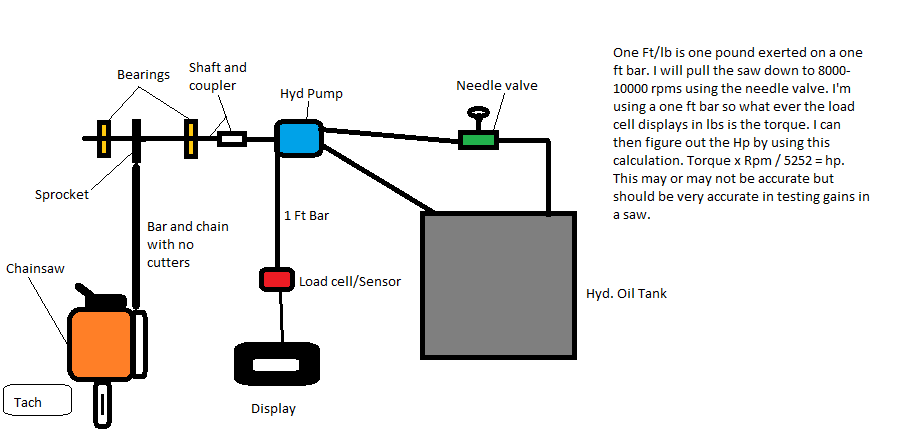Brake VS inertia
Sorry I'll openly disagree...actually will agree inertia is simplest but IMO useless for 2 stroke air cooled.
.An air cooled engine AKA chainsaw (unless you are running new secret water cooled chainsaws) should not be tested on a flywheel inertia dyno...While I run my brake dyno for only air cooled motorcycles the principals are entirely the same for air cooled chainsaws. If you run a hot saw for competition it may not matter as much since the run times are so short. Hopefully short enough not to cook the motor, But in general a brake dyno is infinitely better to get the motor into "heat soak" and you should be tuning so the motor does not fry the pistons into melted aluminum for the period of time required to cookie a 20" log of oak.
I can tune a bike to make killer (short term) power Yet down the back straight of daytona it will spit you off with a seized engine. A heat soaked engine tune is absolutely critical.
I had and run my dyno for over 20 years on air cooled bikes.
If you think clutch slippage is a problem ....remove the springs. I would think that you would not care about measuring power sub 3000rpm. In my world I don't see having a normal clutch as any obstacle at all.:hmm3grin2orange:
Sorry I'll openly disagree...actually will agree inertia is simplest but IMO useless for 2 stroke air cooled.
.An air cooled engine AKA chainsaw (unless you are running new secret water cooled chainsaws) should not be tested on a flywheel inertia dyno...While I run my brake dyno for only air cooled motorcycles the principals are entirely the same for air cooled chainsaws. If you run a hot saw for competition it may not matter as much since the run times are so short. Hopefully short enough not to cook the motor, But in general a brake dyno is infinitely better to get the motor into "heat soak" and you should be tuning so the motor does not fry the pistons into melted aluminum for the period of time required to cookie a 20" log of oak.
I can tune a bike to make killer (short term) power Yet down the back straight of daytona it will spit you off with a seized engine. A heat soaked engine tune is absolutely critical.
I had and run my dyno for over 20 years on air cooled bikes.
If you think clutch slippage is a problem ....remove the springs. I would think that you would not care about measuring power sub 3000rpm. In my world I don't see having a normal clutch as any obstacle at all.:hmm3grin2orange:
Last edited:


























































